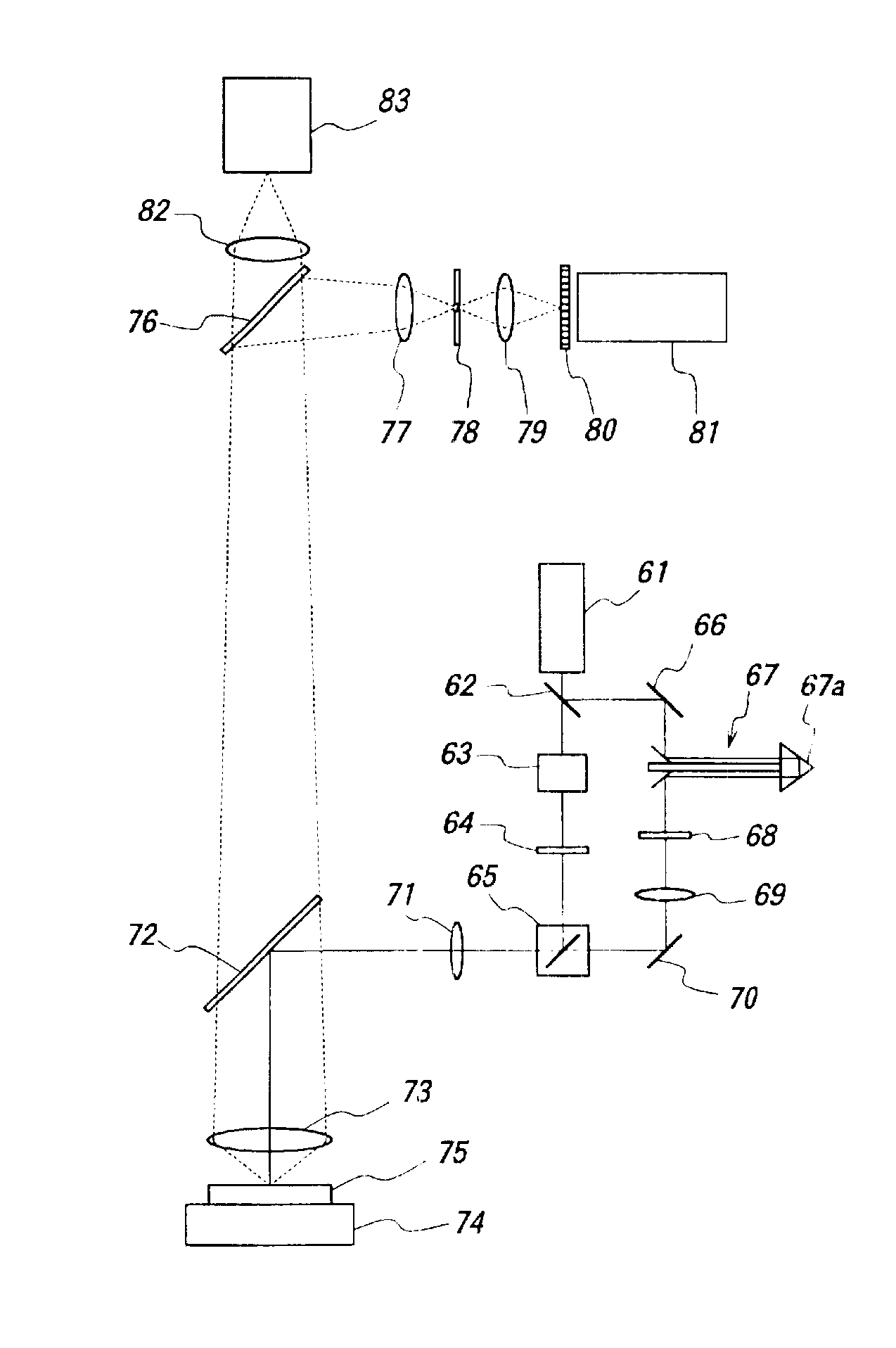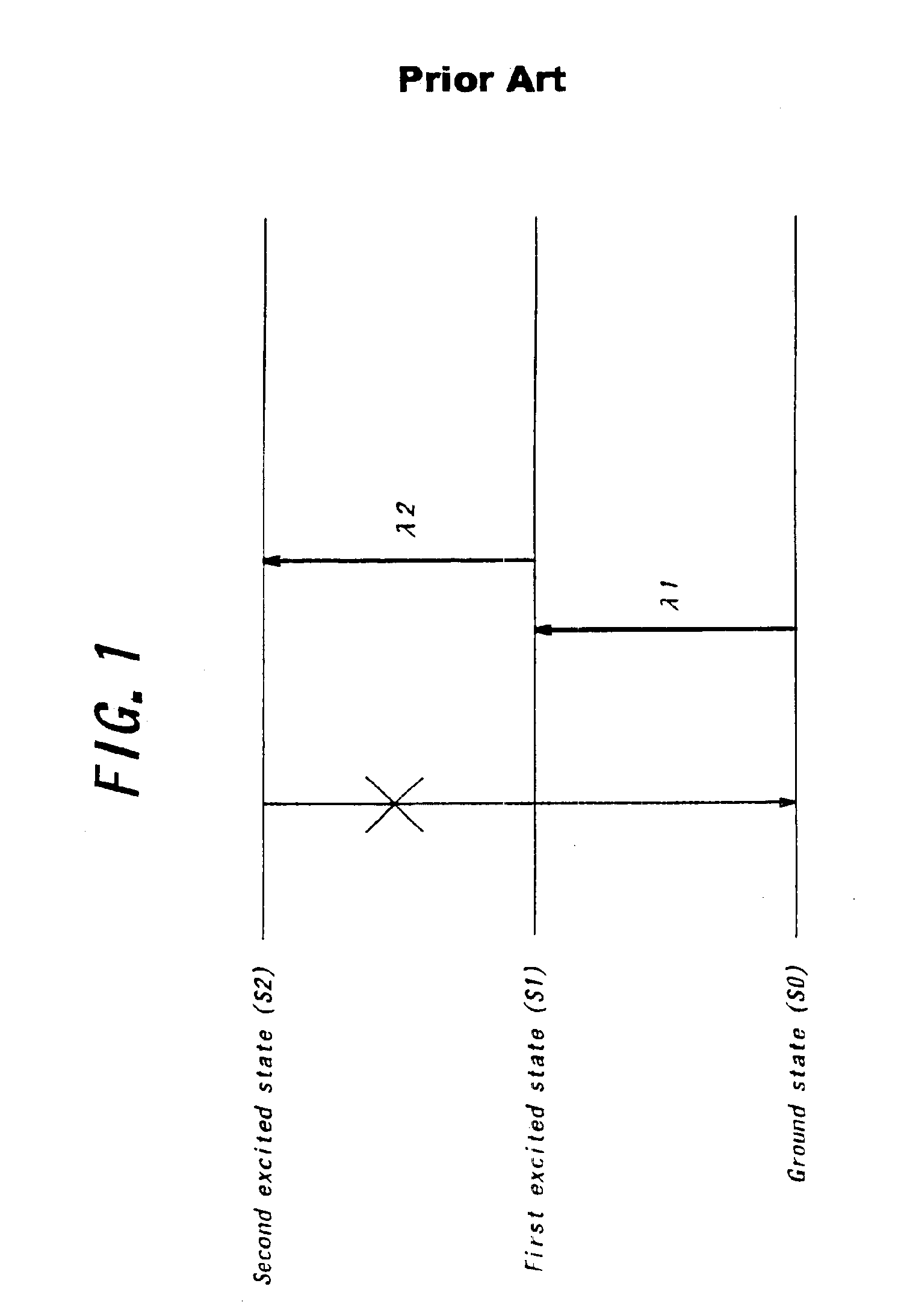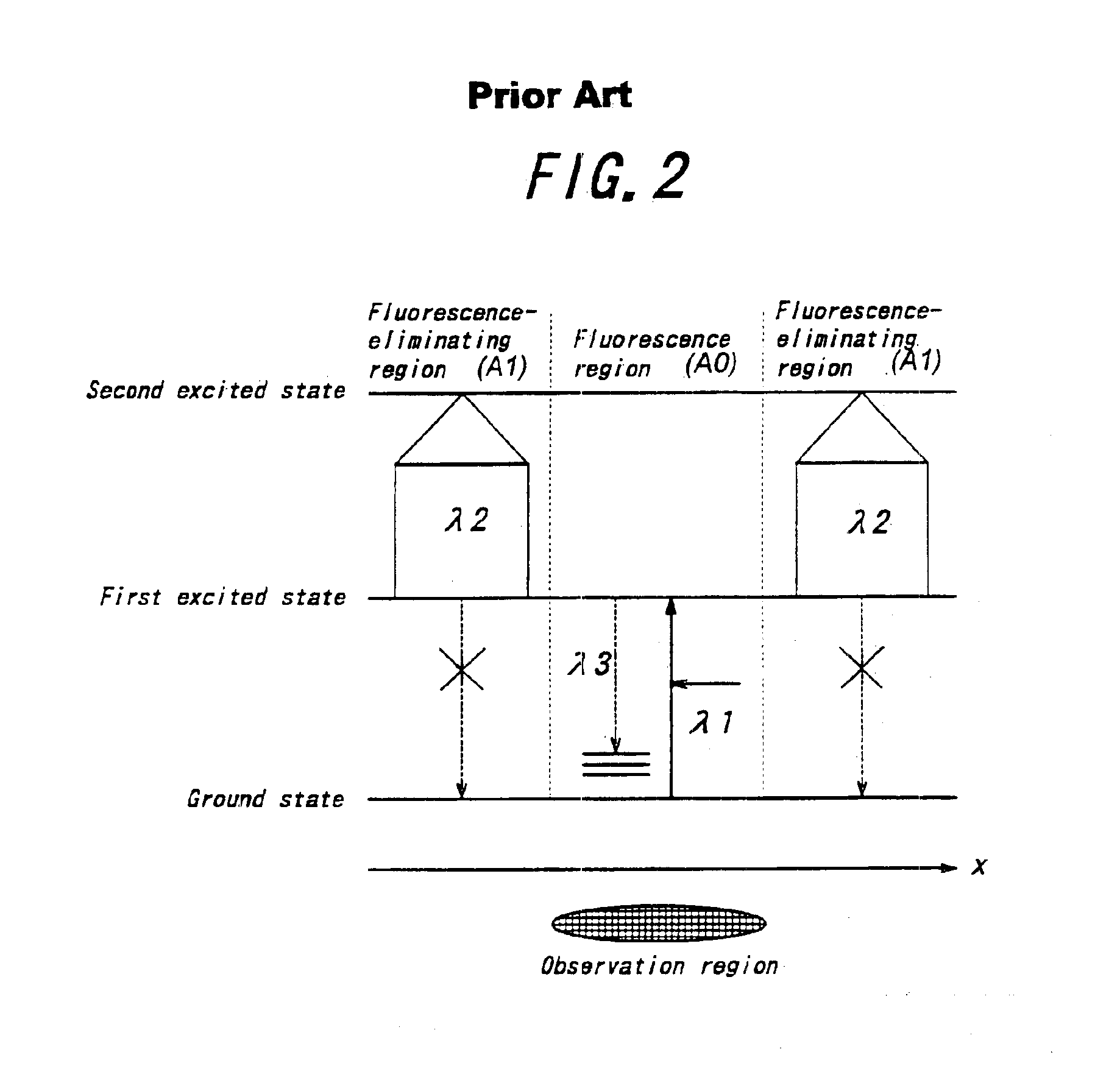[0034]It is an object of the present invention to provide a sophisticated microscope using lights of two wavelengths including at least
infrared ray or near infrared ray where one light corresponds to the
resonance wavelength between the
ground state and a given vibration state of a molecule or a given crystalline structure in a sample, and the other light corresponds to an exciting wavelength between the given
excited state and a higher
electron excited state, and then, by observing the optical response from a narrower region than the
diffraction limit, a given chemical group of the sample, which is characterized by a given vibration state, is detected in
high resolution.
[0042]In the preferred embodiment of the present invention, a first light and a second light which have their respective different wavelengths are employed, and at least one of the lights is composed of a infrared light or
near infrared light. Then, the lights are overlapped partially and spatially and then, irradiated onto the sample. In this case, the wavelength of the infrared light or the
near infrared light is set to a
resonance wavelength to excite the molecule or the crystalline structure of the sample to the given vibration state, and the wavelength of the other light is set to a wavelength to excite to a higher energy level electron excited state from the vibration state, and by observing an optical response (fluorescence) from the sample at the time when the lights are irradiated, a given chemical group which is characterized by the vibration state is detected in
high resolution.
[0051]The use of the infrared light or the
near infrared light enables almost the same information as that of a conventional fluorescent microscope to be obtained without the dye of a sample such as the biogenic
organism with the fluorescent dye molecules. As mentioned above, the
vibration absorption spectrum of a given chemical group is sensitive to the surrounding environment, and thus, is changed in structure. In view of the above-mentioned property of the
vibration absorption spectrum, the use of the infrared light or the near infrared light enables the existence condition of the substance as well as the
material structure of the substance to be clarified. Therefore, the combination of the excellent analysis performance due to the use of the infrared light or the near infrared light and the (infrared) double-resonance absorption process enables the spatial resolution of the microscope to be developed.
[0055]Therefore, the infrared double resonance absorption process is characterized by the high detection sensitivity. For example, in an infrared or a
near infrared spectroscopy, an absorption spectrum within an infrared or a near
infrared wavelength region is measured, but the change in intensity of the absorption spectrum can not be detected precisely if the absorption degree is small due to the intensity fluctuation of a
light source. On the contrary, in the infrared double resonance absorption process, since the side-products are created only by irradiating the pumping light and the probe light into a sample, various phenomena can be easily detected. This process is called as a “zero-level detection”, which is employed in a field of fluorescent microscope, photoelectron microscope or fluorescent X-ray analysis. Moreover, the sensitivity of the detection process using the infrared double resonance absorption is very high.
[0062]In this case, since the wavelength of the probe light is longer, the damage in the sample to be observed can be alleviated, and various
laser source commercially available may be employed. For example, an Ar
laser (476.5 nm) may be employed as the prove light having the wavelength of 475 nm, and an AlGaAs-based
semiconductor laser commercially available, which is not expensive and high reliable, may be employed as the pumping light having the wavelength of 900 nm.
[0065]Various overlapping method for the beam region patterns of the pumping light and the probe light can be considered. As shown in FIGS. 13(a)-(c), for example, the pumping light and the probe light are divided into two regions relating their respective phase
modes on the sample, and then, partially overlapped on the sample. In this case, the spatial resolution can be enhanced two times laterally on the sample. Moreover, as shown in FIGS. 14(a)-(c), the two divided beam regions of the pumping light and the probe light are spatially overlapped on the sample longitudinally and laterally, and thus, the spatial resolution can be enhanced longitudinally and laterally. In this case, the two divided beam regions are partially and laterally overlapped in the same manner as shown in FIG. 13, and also, partially and longitudinally shifted each other, to
restrict the overlapping region. For example, longitudinal half
pitch shift enables the spatial resolution to be enhanced two times.
 Login to View More
Login to View More  Login to View More
Login to View More 


